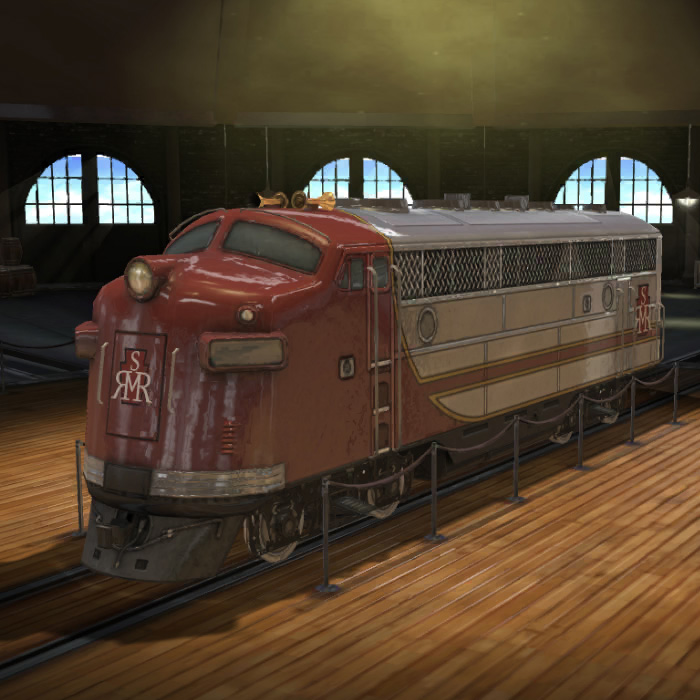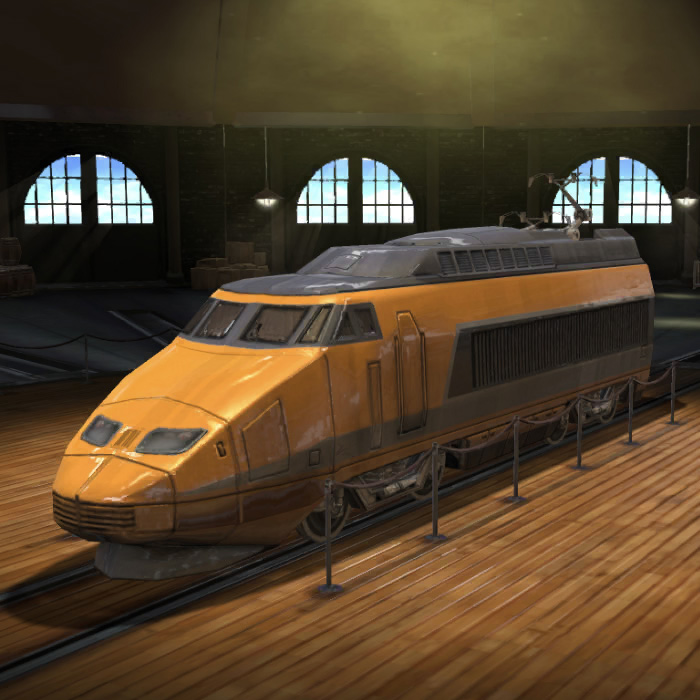Engines
Sid Meier's Railroads! brings forty famous trains to life, from the early steam locomotives like Stephenson's Planet, to the high-speed French TGV, and many iterations and innovations in-between. Below are just a handful of the historically important engines players will employ.
4-4-0 American

One of the most versatile and reliable engines to touch rail in its era, the 4‑4‑0 American steam locomotive defined 19th century rail travel in the west. Capable of passenger, freight and switcher work in equal measure, the 4‑4‑0 was built on a simple, easily repaired frame that kept maintenance costs to a minimum. It was this exceptional adaptability that turned the 4‑4‑0 into the United States’ national engine, the only locomotive to bear the name “The American.”
4-6-2 Pacific

Taking its name from the ocean it crossed before its first use, the American‑built and New Zealand‑christened 4‑6‑2 “Pacific” was endlessly popular in the United States as the country’s premier express passenger locomotive. The 4‑6‑2’s strength was hauling numerous cars over long distances at high speeds, and the Pacific name became synonymous with some of the most famous railways of the time – The North Coast Limited, The Sunset Limited, and The Broadway Limited.
F-Series

While diesel engines had been used for some time in high‑speed passenger trains, it was generally assumed that no diesel could haul freight as well as a powerful steam locomotive. No engine, that is, until the EMD F‑Series. First touching rail in 1939, the F‑Series outperformed the average freight hauling steam locomotive and was versatile enough to haul passengers as well. With over 1,700 F‑Series sold, this engine marked the beginning of the end of the steam era in America.
2-2-0 Planet

While previous designs had assured their place in railroad history, the innovations of the Stephensons’ 2‑2‑0 Planet gave the father and son team a visible legacy in nearly all future rail travel. The 2‑2‑0’s horizontal cylinders, attached to the front of the engine instead of the rear for better balance, as well as a multi‑tubular boiler, would soon become important standards. And while later engines improved on the 2‑2‑0’s various flaws, such as its unsteadiness at increasing speeds, its strengths found their way into the blueprints of innumerable engines to come.
4-6-2 A4

Designed by Sir Nigel Gresley of the London & North Eastern Railway, the A4 holds the high speed record for a steam locomotive, having broken 126mph. The engine’s streamlined exterior was specifically designed to attract the eye of the passengers it carried. These engines quickly became the most popular passenger trains in Britain, and despite a few reliability issues, were kept in use until the widespread adoption of diesel engines.
TGV

The TGV, short for Train à Grande Vitesse or high‑speed train, is just that. Pure, unadulterated speed. Constructed in 1976, the French TGV set its speed record in 1990, breaking 320mph. While its speed is unquestionable, the TGV an extremely specialised machine, incapable of hauling any cargo other than passengers or mail. But, with numerous lines across France, connections to Germany, Belgium and the Netherlands, and imitators throughout Europe, the success of the TGV as an express passenger train in evidence across the continent.
Before purchasing please check the store page to confirm that your device is supported.



